What is an AI Robot and how does it work?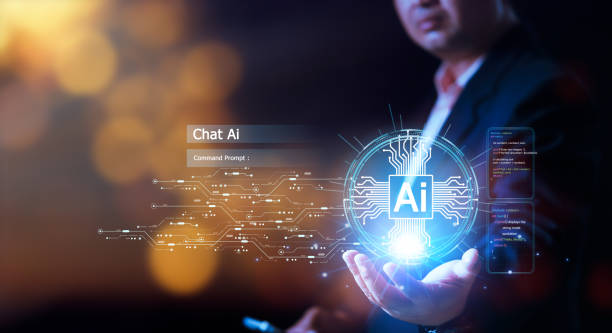
What is an AI Robot and How Does It Work?
In today’s world, the term #Artificial_Intelligence (AI) is increasingly heard.
But when it comes to #AI_Robot, what exactly does it mean? An AI robot is essentially a computer program designed to mimic human cognitive abilities.
These capabilities include learning, problem-solving, reasoning, and understanding natural language.
These robots operate through complex algorithms and machine learning models.
In summary, an AI robot receives data, processes it, and makes decisions or responds based on learned patterns.
This process is similar to how the human brain works, with the difference that robots can process vast amounts of data much faster.
The use of AI robots in various industries, including medicine, finance, and manufacturing, has significantly increased, and their potential to change how we live and work is immense.
This technology not only boosts efficiency but also provides new possibilities for solving complex problems.
Don’t have a company website yet and are missing out on online opportunities? With professional corporate website design by Rasawab,
✅ Double your business credibility
✅ Attract new customers
⚡ Free consultation for your corporate website!
Different Types of AI Robots: Familiarity with Applications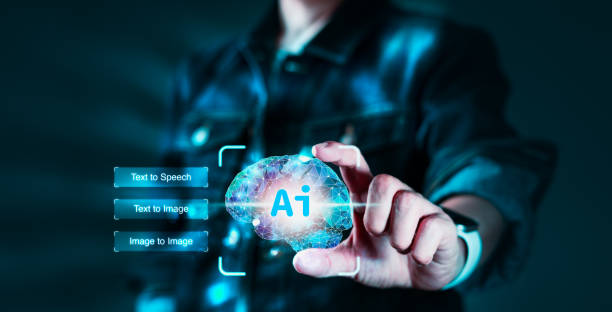
Different Types of AI Robots: Familiarity with Applications
AI robots come in various shapes and sizes, each designed for specific applications.
A common categorization divides them into three main types based on their capabilities: AI robots:
- Reactive Robots These are the simplest type of robots and merely respond to environmental stimuli.
They have no memory and cannot learn from past experiences.
A good example of such robots are early chess-playing robots that make decisions solely based on game rules and the current position of pieces. - Limited-Memory Robots These robots can store limited information about their past.
This memory allows them to make better decisions based on recent experiences.
For example, a self-driving car might use its limited memory to recall the positions of other cars in the last few seconds. - Theory of Mind Robots These robots are more advanced and can reason about the thoughts, feelings, and intentions of others.
This capability allows them to participate in more complex social interactions.
Although still in early stages of development, they have high potential for applications such as elderly care and education.
In addition to this categorization, AI robots can also be classified based on their applications.
For example, industrial robots are used to automate manufacturing processes, while medical robots are employed to assist in surgeries and diagnose diseases.
Service robots are also increasing and are used in areas such as customer service and goods delivery.
Machine Learning and its Role in the Development of AI Robots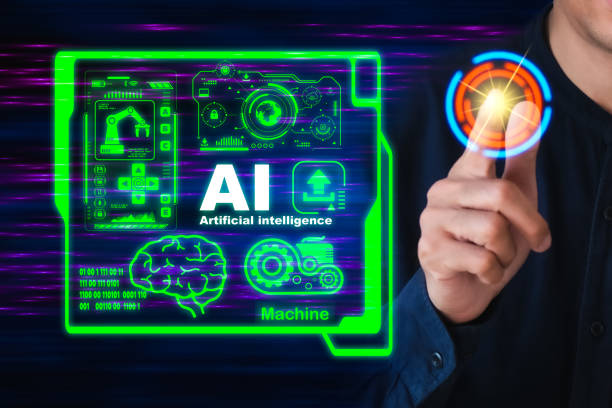
Machine Learning and its Role in the Development of AI Robots
Machine Learning is one of the main branches of artificial intelligence that allows robots to learn from data without explicit programming.
This process involves using algorithms that can identify patterns and relationships in data and use them to predict or make decisions.
The use of machine learning for developing AI robots enables them to adapt to changing environmental conditions and improve their performance.
There are various types of machine learning algorithms, each suitable for specific applications.
Supervised Learning involves training a model on labeled data, meaning the correct answer for each input is known.
Unsupervised Learning, in contrast, involves training a model on unlabeled data, with the goal of discovering hidden patterns within the data.
Reinforcement Learning is another type of machine learning where a robot learns through trial and error to achieve optimal performance in a specific environment.
AI robots using these methods can automatically improve their behavior and achieve set goals.
| Machine Learning Algorithm | Description | Applications in AI Robots |
|---|---|---|
| Linear Regression | Predicting a continuous value based on one or more independent variables | Robot motion prediction, distance estimation |
| Naive Bayes Classifier | Assigning an instance to a category based on probability | Object detection, sentiment classification |
| Neural Networks | Complex modeling of relationships between data | Image processing, pattern recognition, motion control |
Challenges and Limitations of AI Robots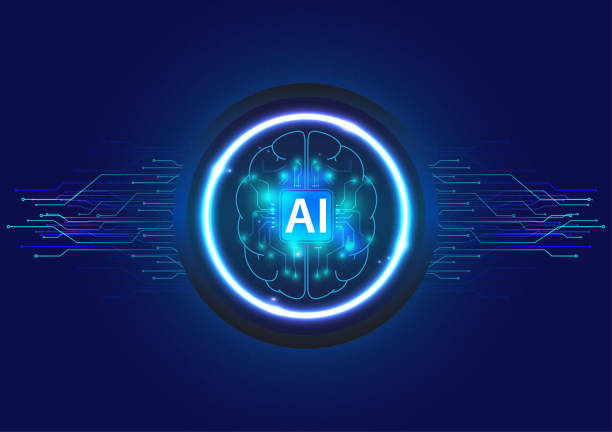
Challenges and Limitations of AI Robots
Although AI robots have made significant progress, they still face considerable challenges and limitations.
One of the most important challenges is the need for large amounts of high-quality data to train machine learning models.
Without sufficient data, robots cannot learn effectively and perform optimally.
Another challenge is the issue of bias in data.
If training data contains bias, robots will also learn that bias and may make unfair decisions.
Furthermore, AI robots still struggle to understand and respond to unexpected and complex situations.
They are usually designed for specific conditions and cannot adapt well to sudden changes.
The issue of security is also another important concern.
AI robots are vulnerable to cyberattacks, and hacking them can have serious consequences.
From an ethical perspective, important issues are also raised regarding the use of AI robots.
For example, who is responsible for the decisions made by robots? How can the misuse of this technology be prevented? These questions require more detailed discussion and consideration to ensure that AI robots are used responsibly and ethically.Despite these challenges, #AI_robots currently provide significant assistance to human life.
Does your current corporate website present a worthy image of your brand and attract new customers?
If not, transform this challenge into an opportunity with Rasawab’s professional corporate website design services.
✅ Significantly improve your brand’s credibility and image.
✅ Paves the way for attracting new leads and customers for you.
⚡ For a free and specialized consultation, contact Rasawab now!
Applications of AI Robots in Various Industries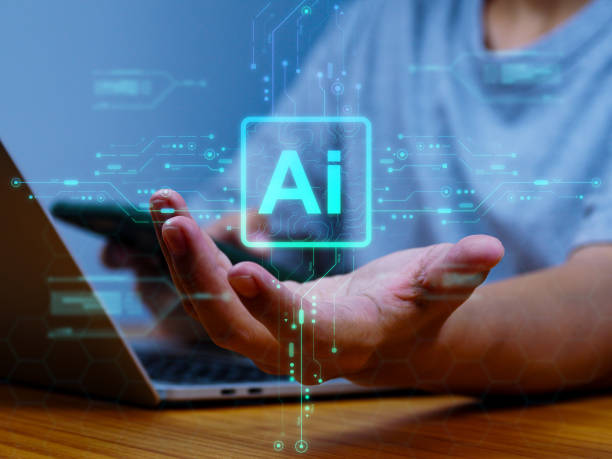
Applications of AI Robots in Various Industries
AI robots are transforming various industries and have wide-ranging applications in different fields.
In the manufacturing industry, AI robots are used for automating production processes, quality control, and predicting equipment failures.
This leads to increased efficiency, reduced costs, and improved product quality.
In the medical industry, AI robots are used for diagnosing diseases, planning surgeries, and providing personalized patient care.
They can analyze medical images with high accuracy, identify hidden patterns in clinical data, and assist physicians in important decision-making.
In the financial industry, AI robots are used for fraud detection, risk management, and providing investment advice.
They can process vast amounts of financial data at high speeds and identify suspicious patterns.
In this context, #AI_robots play an important role.
In the customer service industry, AI-powered chatbots are used to answer customer questions, provide technical support, and resolve issues.
They can be available 24/7 and provide services to a large number of customers simultaneously.
The Future of AI Robots and their Impact on Society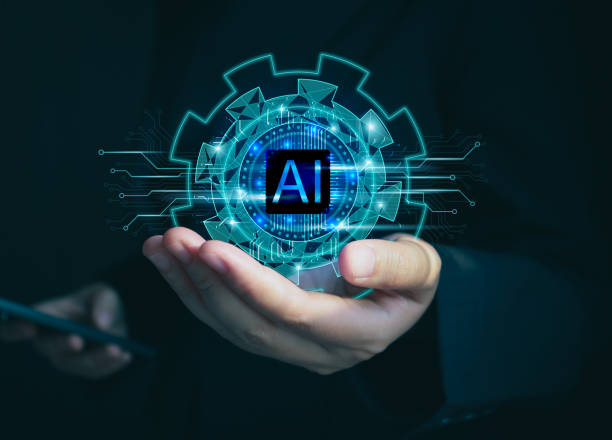
The Future of AI Robots and their Impact on Society
The future of AI robots looks very bright, and this technology is expected to achieve significant advancements in the coming years.
With the development of new algorithms and increased computational power, robots will be able to perform more complex tasks and interact more effectively with their environment.
One of the most important impacts of AI robots on society is the change in the job market.
With the automation of many jobs, some employment opportunities will be lost, but at the same time, new opportunities will be created in fields such as robot development, maintenance, and training.
For society to adapt effectively to these changes, individuals need to learn new skills and prepare for future jobs.
AI robots can drive societal progress through these changes.
Moreover, AI robots can have profound impacts on our daily lives.
They can help us with household chores, care for the elderly, educate children, and even assist us in making important decisions.
However, to fully benefit from this technology, we need to address the ethical and social issues associated with it and ensure that AI robots are used responsibly and fairly.
Introduction to Tools and Platforms for AI Robot Development
Introduction to Tools and Platforms for AI Robot Development
The development of AI robots requires the use of specific tools and platforms that allow developers to easily create, train, and implement machine learning models.
Some of the most popular tools and platforms for AI robot development include:
- TensorFlow is an open-source library developed by Google and used for creating and training deep machine learning models.
- PyTorch is another open-source library developed by Facebook, popular for its flexibility and ease of use.
- scikit-learn is a Python library that includes various machine learning algorithms for classification, regression, clustering, and dimensionality reduction.
- ROS (Robot Operating System) is a software framework used for developing robotic software.
This framework includes various tools and libraries that allow developers to easily program and control robots.
| Platform | Programming Languages | Application |
|---|---|---|
| TensorFlow | Python, C++ | Deep Machine Learning |
| PyTorch | Python | Deep Machine Learning, Research |
| ROS | C++, Python | Robotic Software Development |
The use of these tools and platforms allows developers to quickly and effectively develop and implement AI robots in various industries.
Ethical Considerations in Designing and Using AI Robots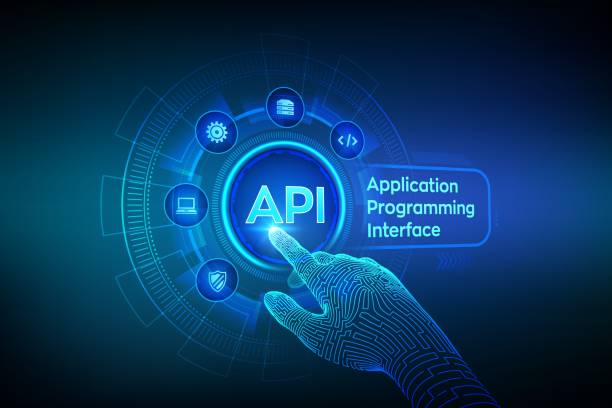
Ethical Considerations in Designing and Using AI Robots
As AI robots become more advanced and play a more significant role in our lives, ethical considerations associated with them gain greater importance.
One of the most important ethical considerations is the issue of accountability.
If an AI robot makes a decision that leads to harm, who is responsible? The developer, the user, or the robot itself?
Another issue that needs attention is transparency.
How can one ensure that the decisions made by AI robots are explainable and understandable? If an AI robot makes a decision that seems unfair, how can that decision be reviewed and its cause determined? Furthermore, the issue of privacy must also be considered.
AI robots often have access to large amounts of personal data, and it must be ensured that this data is used securely and responsibly.
To address these ethical considerations, a strong ethical framework needs to be established for the design and use of AI robots.
This framework should include principles such as accountability, transparency, fairness, privacy, and safety.
Also, it must be ensured that these principles are adhered to throughout all stages of AI robot development and implementation.
Are you dissatisfied with the low sales of your e-commerce website?
Rasawab is your solution for a professional and high-selling e-commerce website.
✅ Significant increase in sales and revenue
✅ Easy and enjoyable shopping experience for customers
⚡ Get a free consultation from Rasawab now!
Key Tips for Choosing and Using the Right AI Robot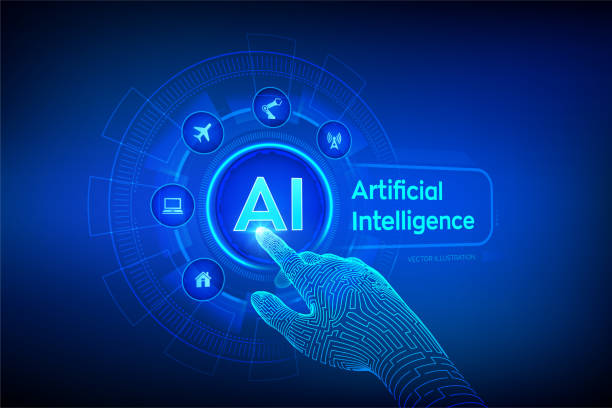
Key Tips for Choosing and Using the Right AI Robot
Choosing and using the right AI robot can be a complex process, but by considering a few key tips, this process can be simplified.
First, you need to accurately define your needs.
What problem do you want to solve? What goals do you want to achieve? Answering these questions will help you determine the type of AI robot you need.
AI robots provide significant assistance in decision-making.
Second, you should compare the features and capabilities of different AI robots.
Look for a robot that has the features you need and can effectively interact with its environment.
Third, you should also consider the cost.
The price of AI robots can vary significantly, and you should choose a robot that fits your budget.
In addition, you should pay attention to technical support.
Does the AI robot manufacturer provide adequate technical support? Is there sufficient documentation for using the robot? Answering these questions will help you avoid buying a robot that you cannot use.
By considering these key tips, you can choose a suitable AI robot and fully benefit from its advantages.
Case Study: Successes of AI Robots in the Real World
Case Study: Successes of AI Robots in the Real World
To better understand the potential of AI robots, a case study of their successes in the real world can be very useful.
One prominent example is the use of AI robots in the logistics industry.
Companies like Amazon use robots to move goods in warehouses, which has led to increased speed and reduced costs.
In this industry, AI robots are very widely used.
In the healthcare industry, AI robots are helping doctors diagnose diseases and provide more effective treatments.
For example, surgical robots can perform complex surgeries with greater precision, and diagnostic robots can identify hidden patterns in medical images.
In the financial industry, AI robots are used for fraud detection and risk management.
They can process vast amounts of financial data at high speeds and identify suspicious patterns.
Moreover, AI-powered chatbots are becoming an essential tool for customer services.
They can be available 24/7 and answer customer questions and resolve their issues.
These examples show that AI robots can have significant impacts across various industries and help improve efficiency, reduce costs, and provide better services.
Today, #AI_robots are used as a key element in many industries.
Frequently Asked Questions
| Row | Question | Answer |
|---|---|---|
| 1 | What is an AI robot? | An AI robot is a machine capable of understanding, reasoning, learning, and problem-solving, and can perform complex tasks with relative autonomy. |
| 2 | What are the most important applications of AI robots? | Key applications include industrial manufacturing, customer services (chatbots), medicine and surgery, autonomous transportation, space exploration, and military affairs. |
| 3 | What is the main difference between an AI robot and a regular robot? | A regular robot only follows programmed instructions, while an AI robot can learn from data, make decisions, and adapt to new environments. |
| 4 | How do AI robots learn? | They learn through machine learning algorithms (such as deep learning, reinforcement learning) and by processing vast amounts of data, identifying patterns, and improving their performance. |
| 5 | Can AI robots have emotions? | Currently, AI robots do not have real emotions in the human sense. They can mimic or detect emotions but do not understand or experience them. |
| 6 | What are the current limitations of AI robots? | Limitations include the need for large amounts of data, inability to understand abstract concepts, lack of true creativity, ethical issues, and challenges in generalization to new environments. |
| 7 | What is the role of AI in the development of humanoid robots? | AI helps humanoid robots to walk, maintain balance, understand their surroundings, interact with humans, and perform complex tasks. |
| 8 | How is the future of AI robots predicted? | It is predicted that AI robots will become smarter, more autonomous, and capable of performing more complex tasks in daily life and industry, and their interaction with humans will increase. |
| 9 | Can AI robots replace all human jobs? | It is unlikely that all human jobs will be replaced. Robots will take over many repetitive and dangerous tasks, but jobs requiring creativity, empathy, and ethical judgment will remain. |
| 10 | What ethical and social challenges arise with the expansion of AI robots? | Challenges include issues related to privacy, data security, ethical decision-making by robots, impact on employment, and accountability in case of errors. |
And other advertising agency services by Rasa Web in the field of advertising
- Smart Brand Identity: An effective tool for attracting customers with SEO-driven content strategy.
- Smart Direct Marketing: A specialized service for growing user engagement based on intelligent data analysis.
- Smart UI/UX: Professional optimization for customer acquisition using user experience customization.
- Smart Content Strategy: A creative platform for improving customer behavior analysis with marketing automation.
- Smart Advertorial: A professional solution for customer behavior analysis focusing on intelligent data analysis.
And over hundreds of other services in the field of internet advertising, advertising consultation, and organizational solutions
Internet Advertising | Advertising Strategy | Advertorial
Sources
What is Artificial Intelligence and how does it work?Applications of Artificial Intelligence in Everyday LifeIntroducing the Best AI RobotsTypes of Artificial Intelligence
? Ready to transform your business in the digital world? Rasawab Afarin Digital Marketing Agency, with its expertise in professional website design and SEO, offers innovative solutions for your growth and visibility.
📍 Tehran, Mirdamad Street, next to Bank Markazi, Southern Kazeroun Alley, Ramin Alley, No. 6




